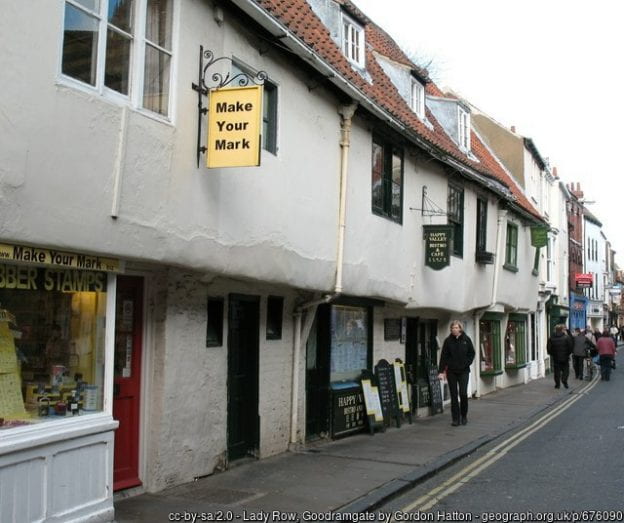The King’s Bench plea roll for Easter 1435 contains an entry relating to proceedings against a clerk, Thomas Harvy, for alleged offences in Norfolk. Along with others, he was accused of ambush, assault and robbery, and, alone, he was accused of a sexual offence. He pleaded not guilty to all of the accusations, and, after some delay, a jury found him not guilty.[i] There is nothing unusual in any of this: experience with these sources has taught me that, despite that bloody reputation of medieval law-enforcement, acquittal rather than conviction and grisly punishment, was the norm in such cases. The way in which the allegation is put, however, is unexpected, and, it seems to me, something worth drawing to the attention of scholars outside the small world of medieval legal history.
As will be obvious from my title, the unusual aspect to the entry is in its description of the sexual offence with which Thomas Harvy was charged.
Here it is, in free translation:
On Monday 11th January, 1434, at Bishop’s Lynn (now King’s Lynn) before William Paston, William Godrede and William Yelverton, and their colleagues, justices of the peace, the jurors presented that, on 1st October 1433, Thomas Harvy of Testerton, clerk (clericus) … broke into the house of John Serjeant of Colkirk, at Colkirk, and attacked Margaret, John’s wife, wounding her shamefully with a certain carnal lance called, in English, a ‘ballokhaftitdagher’, and so he continued to do until that day, setting a bad example etc., to John’s great damage and against John’s will.
What is going on, and why do I think that these few words are worth anyone’s time?
This part of the allegations against Thomas Harvy involved sexual misconduct, but was not on the usual spectrum of felonious rape and ‘ravishment’ charges seen in medieval common law records. It does not follow the pattern of rape charges, in that there is no allegation of ‘felony’, nor of ‘carnal knowledge’ against the will of the woman. It does not follow the pattern of ‘ravishment’ charges, in that there is no reference to abduction, nor any mention of the removal of the husband’s goods. The complaint is, rather, that the misconduct took place on (and continued to take place on) the husband’s premises. Despite the talk of wounding and weapons, there is every chance that this would have been understood by the (all male) jury, judges and the scribe who wrote the matter up on the King’s Bench plea roll, not to have been an allegation of rape (as they understood it) but an allegation of sex which was problematic only in that it was between parties who should not have been having sex, as opposed to being problematically violent or problematically non-consensual.
It would, in fact, almost be possible not to spot that this is a sexual offence: after all, with the attacking, wounding, and reference to lance and dagger, it sounds rather like a serious ‘general’ assault with authentically medieval weapons. I am fairly sure, though, that those weapons are not what they seem. Apart from the fact that a lance or spear would be an unusual weapon in a case of breaking, entry and assault, there are sexual/anatomical overtones to both ‘weapons’ mentioned. I would be inclined to question my reading (and perhaps wonder whether the ‘lance’ was some sort of butchery implement) if there was only one of these suggestive ‘weapons’, but seeing both together makes a pretty strong case for seeing the ‘carnal lance’ and ‘ballock hafted dagger’ as evoking not actual weapons but metaphorical weapons, and to refer to male genitalia. Such a resort to metaphorical language is unusual within the generally unfanciful context of medieval plea rolls, but the use of weapon-imagery in relation to sex will not be unfamiliar to scholars steeped in literary sources.[ii]
I have come across the ‘carnal lance’ image on its own in a very small number of other cases.[iii] It is consistent with an idea of sex as a battle, or a joust, with the understanding that weapons were profoundly masculine items, and with the view that normal, un-transgressive, heterosexual sex was thought (at least by those who were in a position to leave clues to their views) to involve an active man and a passive woman, and a degree of force. The reference to the ‘ballock hafted dagger’ can be fitted into a similar pattern, but it is both less familiar and more fascinating. Some rapid research on a term I had never encountered revealed that ‘ballock-hafted daggers’ (more commonly just ‘ballock daggers’) were real weapons,[iv] with a characteristic guard, featuring two swellings clearly thought to resemble testicles. The sexual symbolism of the ballock dagger may be considered to have been enhanced by the fact that they were thrusting rather than cutting weapons, and by the fact that they appear to have been worn hanging outside the clothing in the general area of the genitals.[v] No contemporary, surely, would have failed to ‘get’ the reference.
I am aware that I have blundered into the territory of the literary scholar. Having arrived here, however, I will, tentatively, note two further points of interest with regard to the ‘ballock dagger’ reference. First, it does seem to me to be a slightly different sort of imagery to that of the ‘carnal lance’. The material dagger is named after male genitals, and male genitals are suggested by the reference to the dagger. This strikes the non-expert at least as crude, in more ways than one. I wonder if my second amateur lit. scholar point is also connected with the ‘crude’, in a sense: while the rest of the record is in the high-status, learned language, Latin, this word is in the people’s language, English. There is considerable scholarship on the issue of ‘code-switching’ in the literary context, though less has been done on this practice in the context of the records of common law.[vi] It seems likely that use of an English word here would have had an effect – it is certainly arresting now, to come across it after line upon line of Latin – but speculation about just what effect that would have been is, I think, something to leave to those with deeper knowledge.
Retreating (more or less) to the home turf of the legal historian, it also seems worth noting a possible impulse from medieval common law’s own formulaic nature towards thinking and talking about interactions in ‘weaponised’ language. Those of us who spend long periods of time looking at plea rolls probably tend to filter them out, but in fact entries on these rolls are full of weapons. It was necessary to specify the exact sort of axe, knife or pike used to inflict a homicide, for example (and to set out its value). It was also usual to allege that a trespass was carried out with swords, bucklers and knives (even when it definitely wasn’t). The common law records fairly bristle with armaments, real and fictional, and that is another context within which these metaphorical expressions should be placed. I wonder if it is possible that the lance and dagger images were intended to perform a legal, jurisdictional function, moving Thomas Harvy’s misconduct from being the sort of illicit sex which would have fallen to the jurisdiction of the church to being the sort of peace-breach which sounded like the business of the royal courts.
This case did come to an end, as far as the process of the common law was concerned. Whatever the truth of the matter, Thomas Harvy was found not guilty. I am not going to offer anything so neat as a conclusion to this post. It is, after all, one of the advantages to blog posts that they do not have to follow the rules of the formal academic article game. Besides that, I do not want to conclude, suggesting that I have said the last word on any of this – I am sure that I have not, and nor do I want to. Another of the advantages of the blog post format is that it increases the chances of coming to the attention of scholars outside one’s own little niche, and this one will have accomplished something if its short and basic remarks can encourage a wider body of scholars – particularly scholars of language and literature – to think that there might be something of worth for them in the records of the medieval common law.
The inclusion in these records of the unusual form of expression which I have been discussing raises many questions. We may wonder whether, perhaps, this way of talking about sex and anatomy was widely to be heard in legal proceedings, but usually weeded out before the final plea rolls were produced. The relationship between speech and record in medieval court proceedings is, unfortunately, almost entirely unknowable. Those involved in the administration of common law were, of course, men of their world, and absorbed and reflected back contemporary literary trends and thought on the relationship between men and women. We can only speculate as to the effect on any women who did find themselves involved with this sort of clubby, ‘bantering’, hostile environment (and, though we cannot come to any firm conclusion, such as might be suitable for submission to a traditional academic journal, I think that it is rather important that we do speculate about this).
GS
3rd November, 2021
[i] KB 27/697 Rex m.5 AALT IMG 0183 . You can see a scan of the record here on the AALT website.
[ii] See, e.g., D. Izdebska, ‘Metaphors of weapons and armour through time’, in W. Anderson, E. Bramwell, C. Hough, Mapping English Metaphor Through Time (Oxford, 2016), c. 14; C. Saunders, Rape and Ravishment in the Literature of Medieval England (Woodbridge, 2001), 42; R. Mazo Karras, Sexuality in Medieval Europe: Doing Unto Others, third edn, (Abingdon, 2017), 26, 151, 172; Robert Clark ‘Jousting without a lance’, in F.C. Sautman and P. Sheingorn (eds), Same Sex Love and Desire Among Women in the Middle Ages (New York, 2001), 143-77, 166. The Dictionary of Medieval Latin from British Sources (Brepols, 2018) suggests this meaning too, in its sixth variation on ‘hasta’.
[iii] KB 27/725 m. 31d; AALT IMG 567 (1442); KB 9/359/mm 67, 71; AALT IMG 141 (1482). The latter is mentioned in M. Mate, Daughters, Wives and Widows after the Black Death : Women in Sussex, 1350-1535, (Woodbridge, 1998), 48.
[iv] Ole-Magne Nøttveit, ‘The Kidney Dagger as a Symbol of Masculine Identity – The Ballock Dagger in the Scandinavian Context’, Norwegian Archaeological Review 39, no. 2 (2006), 138-50.
[v] Noettveit, 143.
[vi] See, e.g., G. Dodd, ‘Languages and Law in Late Medieval England: English, French and Latin’, In C. Barrington & S. Sobecki (eds.), The Cambridge Companion to Medieval English Law and Literature (Cambridge: Cambridge University Press, 2019), 17-29.
Image: daggers (reproduction) including, on the left, a ballock dagger. Photograph curtesy of Wikimedia Commons.




